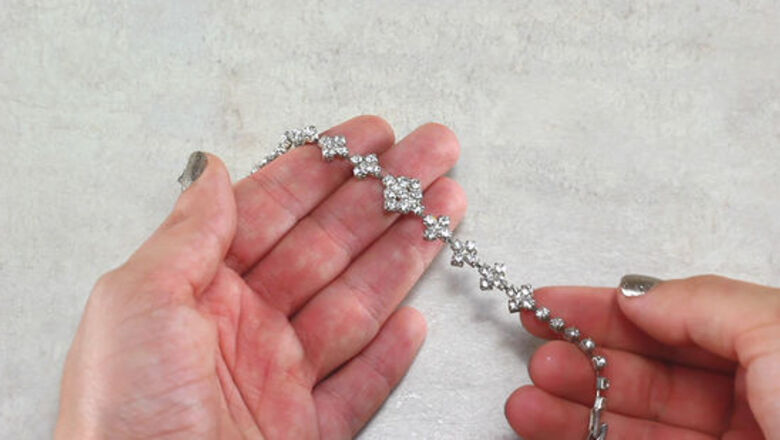
views
Cleaning Your Jewelry
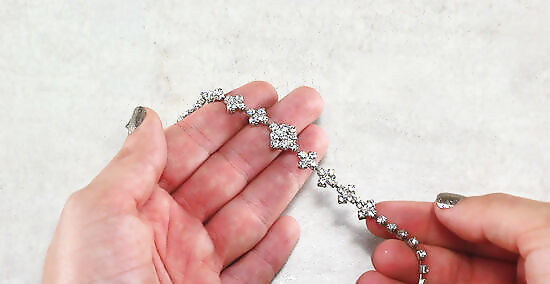
Inspect your jewelry for loose stones or broken clasps. Before you begin, take your piece of jewelry and gently look it over. Loose stones or broken pieces need to be dealt with before you submerge the jewelry in water, otherwise you might lose something. If you notice loose or wiggling pieces, take your jewelry to a professional to have the piece repaired. Use a resealable plastic bag to transport it so that nothing gets lost along the way.
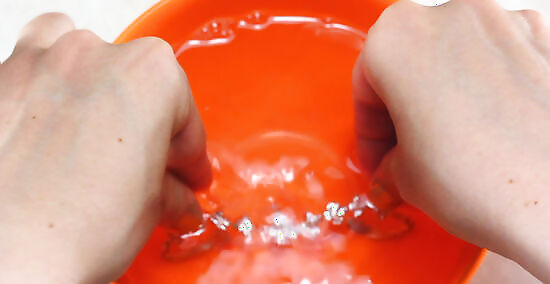
Mix mild dish soap with warm water to soak your white gold. Use about 1 teaspoon (4.9 mL) of mild dish soap and 1 to 2 cups (240 to 470 mL) of warm water. Stir the water with your fingers or a spoon to make the water bubbly. The warm water and soap will gently dislodge any dirt or grime on your jewelry. If your jewelry is really dirty, add 3-4 drops of ammonia to the soapy water. Don’t use hot water to clean your jewelry.
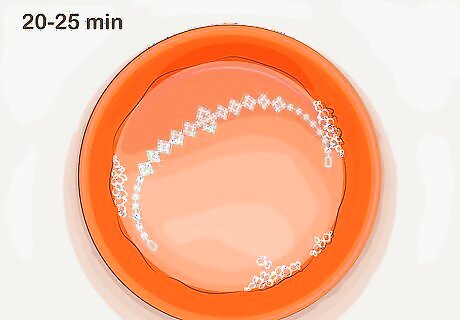
Soak your jewelry in the soapy water for 20-25 minutes. This is the easy part! Just gently place your pieces in the water, set a timer, and walk away. If your jewelry has pearls or onyx stones, don’t soak it. Rather, wrap the metal parts in a soft cloth that has been soaked in warm, soapy water.
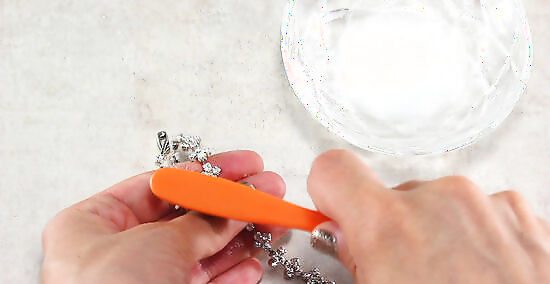
Make a paste out of water and baking soda and scrub the pieces. In a small bowl, use about 1/2 a tablespoon (10 grams) of baking soda and just enough water to create a thick paste. Remove the jewelry from the water and scrub each piece with a soft-bristled brush, like a toothbrush. The baking soda and brush will reach those tiny crevices, and it’ll also make your pieces brighter. If your jewelry is really dirty, you could sub out the water for ⁄2 cup (120 mL) of white vinegar instead.
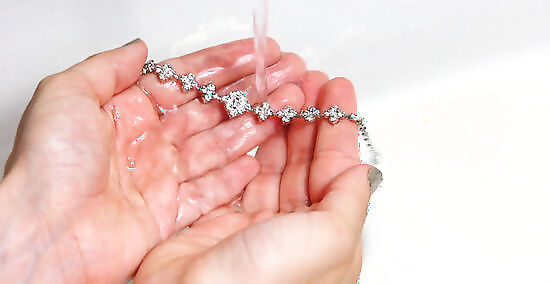
Rinse off the soap and baking soda under warm water. When the pieces are shiny and there’s no more visible soap or paste, you can stop rinsing. Be sure to let water flow between any clasps to thoroughly rinse everything away. Either plug the sink or rinse the items out over a colander to prevent losing anything down the drain.
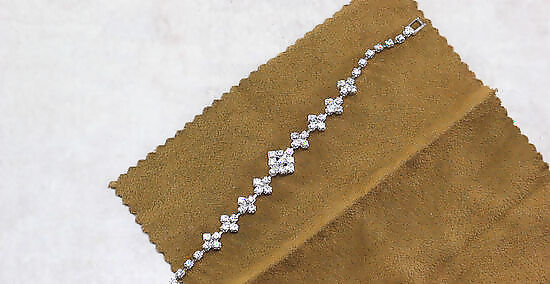
Dry and buff the jewelry with a microfiber cloth. Gently rub each piece until it is dry. Spend time getting between clasps and in small areas that might be hard to reach. The microfiber towel will dry the white gold without leaving any lint or fabric behind. You could also use a special jeweler’s cloth, if you have one.
Maintaining White Gold
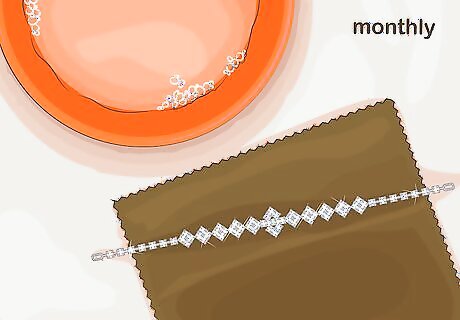
Clean your white gold once a month to keep it in good shape. If you have a piece that gets a lot of use, like a ring, you may even want to clean it every week. Regular cleanings will keep your jewelry shining—set a reminder on your calendar for a monthly cleaning so you don’t forget. Excessive cleaning can wear down the rhodium plating more quickly, so make sure to avoid abrasive cleaning products.
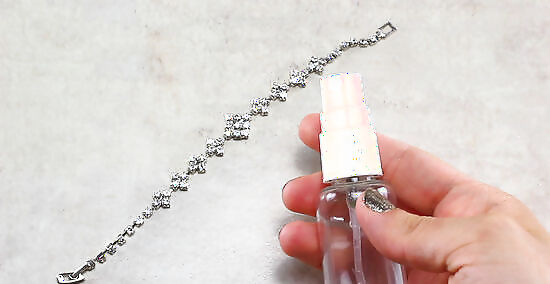
Use a white gold cleaning product if soapy water doesn’t work. Sometimes white gold might have more build-up on it and need something tougher than water and baking soda. Use a spray designed for white gold and follow the manufacturer’s instructions to clean your pieces. Lots of common jewelry cleaning products shouldn’t be used on white gold because they’ll eat away at the rhodium plating.
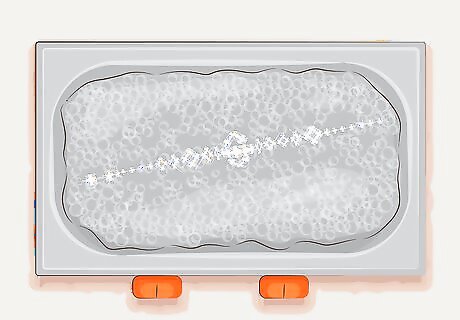
Have a jeweler replate your white gold in rhodium if it’s turning yellow. This is not uncommon for white gold—overtime, the rhodium does wear away, which will make your jewelry look worn down, regardless of how much you clean it. Visit a reputable jeweler and pay to have them refresh the rhodium coating. Depending on what you’re having done, replating will cost anywhere from $40 to $135.
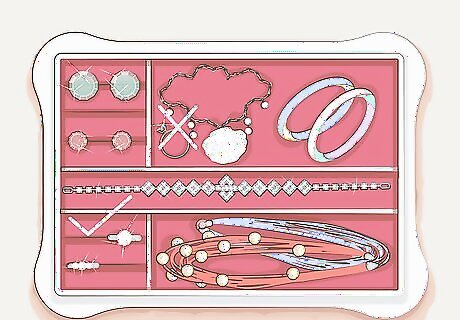
Store white gold apart from other kinds of jewelry to prevent scratches. White gold scratches and dents easily, so store it somewhere it won’t bump up against other, harder, pieces. If you have a jewelry box, dedicate one section to white gold, or you could even wrap each piece in a small microfiber cloth for extra protection. Keep white gold away from high heat. Don’t store it near a heating vent or radiator.
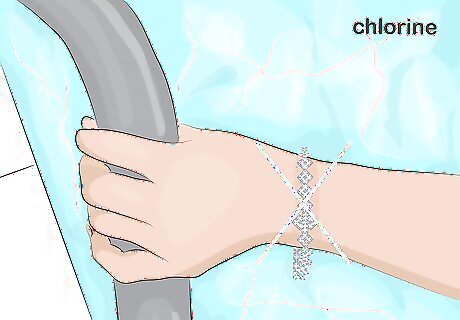
Take off white gold jewelry if you’re going to be swimming in chlorine. Chlorine will eat away at the rhodium plating. Avoid wearing your white gold pieces in the pool. If you’re out at a public pool, store your jewelry in the glovebox of your car, or put it down inside a bag to keep it safe. You should also consider taking off any white gold pieces, like rings, when you shower. Soap scum and hard water can build up on pieces over time.
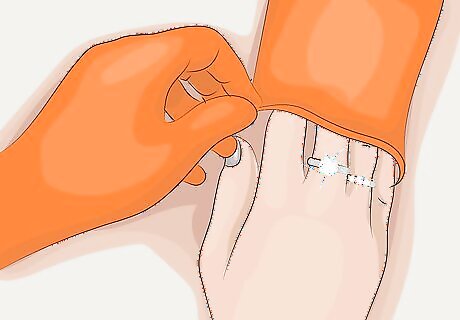
Wear gloves when using abrasive cleaning products. In addition to eating away at the plating, the chemicals can get behind mountings and cause them to deteriorate, which could loosen stones overtime. If you don’t want to wear gloves, just remember to take off your white gold rings before cleaning.











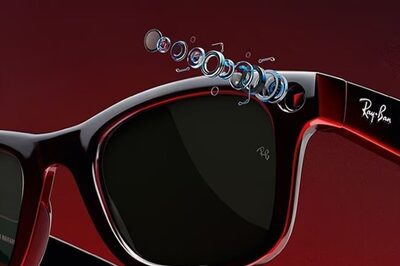




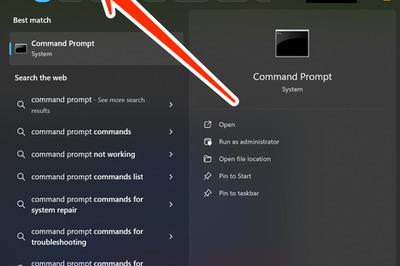
Comments
0 comment